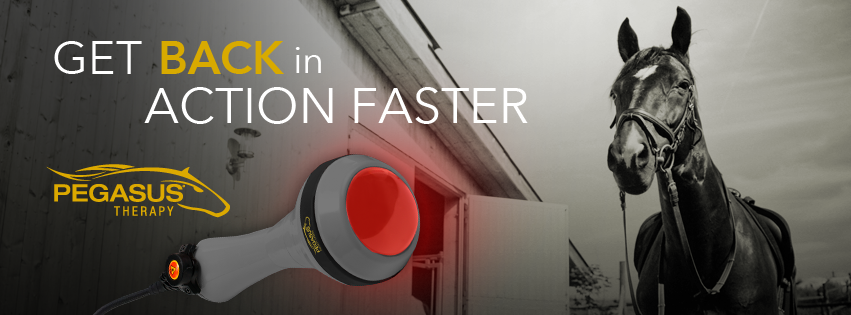Equine Therapy for Trauma Healing: How Steeds Help Heal Emotional Wounds
Equine Therapy for Trauma Healing: How Steeds Help Heal Emotional Wounds
Blog Article
Examining the Performance of Laser Therapy in Equine Therapy for Injury Recovery
The assessment of laser therapy's efficiency in equine injury rehabilitation hinges on several aspects, consisting of healing time, discomfort mitigation, and cells regeneration. Veterinarians regularly observe remarkable outcomes with laser treatment contrasted to conventional methods, placing it as an essential component in equine care.
Understanding Laser Therapy
Laser therapy has come to be a critical device in vet medication, especially in the therapy of equine problems. Known for its non-invasive nature and efficiency, laser therapy involves the application of specific wavelengths of light to stimulate cells repair service and lower inflammation. This restorative modality is significantly preferred for its capacity to accelerate the healing process in steeds struggling with a variety of musculoskeletal injuries and chronic problems.
The primary system behind laser therapy is its capacity to boost cellular features. When laser light permeates the skin, it is taken in by mitochondria, the giant of cells, which results in boosted manufacturing of adenosine triphosphate (ATP) This biochemical energy boost assists in mobile repair work and regrowth. In addition, laser therapy advertises vasodilation, enhancing blood flow and oxygen distribution to damaged tissues, hence expediting healing.
In equine medicine, laser therapy is particularly beneficial for problems such as tendonitis, osteoarthritis, and wound healing. The strategy is admired for its pain-relieving buildings, allowing horses to restore wheelchair and function more swiftly. Vets additionally value its marginal negative effects contrasted to other therapy techniques, making it a trustworthy and risk-free choice for equine care.

Just How Laser Therapy Works

Upon absorption, these photons activate a collection of biochemical modifications, improving mitochondrial function and leading to raised adenosine triphosphate (ATP) manufacturing. This increase in ATP increases cellular metabolic rate, promoting tissue repair service and regeneration. Furthermore, laser treatment modulates inflammatory responses by influencing cytokine levels and lowering oxidative stress and anxiety, thus alleviating discomfort and swelling.
Another considerable facet of laser treatment is its role in improving microcirculation. The treatment promotes vasodilation, improving blood flow and oxygen shipment to damaged cells (Equine Therapy). This click now assists in the elimination of mobile debris and supports the spreading of fibroblasts and collagen synthesis, critical for injury healing
Medical Evidence
The efficiency of laser treatment in equine treatment has been corroborated via different clinical research studies, showcasing its healing potential across a range of conditions. A research study performed by Turner et al. (2012) showed that horses treated with low-level laser therapy (LLLT) for tendon injuries displayed sped up recovery compared to those obtaining traditional therapies.
Likewise, research study by Johnson and associates (2015) focused on equine muscle injuries, revealing that laser therapy substantially quickened muscle mass fiber regeneration and decreased muscular tissue rigidity. Professional evaluations have shown that laser therapy can minimize chronic problems such as osteo arthritis.
Veterinarian Insights

Veterinarians also value the flexibility of laser therapy. She aims out that laser therapy can be tailored to the details needs of each horse, guaranteeing optimal end results.
In addition, vets value the capability to incorporate laser therapy with other treatment methods. This multimodal method can boost total treatment efficiency, providing a comprehensive service for equine rehabilitation. Such directory recommendations from skilled experts emphasize the expanding acceptance and application of laser therapy in equine medication.
Practical Factors To Consider
A key element of executing laser therapy in equine therapy includes understanding the practical factors to consider that guarantee its effectiveness and safety. It is important to select the ideal laser gadget, as numerous kinds differ in wavelength, power, and infiltration deepness. Veterinarians have to be fluent in these criteria to tailor therapy protocols effectively to each injury kind
Furthermore, the regularity and period of laser treatment sessions need careful preparation to maximize healing advantages while minimizing any kind of potential negative impacts. Constant tracking of the steed's action to therapy can lead needed modifications in the treatment regimen. Developing a safe and controlled environment throughout therapies is additionally important to prevent unexpected exposure to laser discharges, which might hurt both the steed and the trainer.
Educating and certification of personnel providing laser treatment are vital to make certain proper method and to maintain safety requirements. Furthermore, keeping accurate documents of each session, consisting of laser settings and observed outcomes, is essential for assessing the Your Domain Name general performance of the therapy and for making data-driven choices.
Conclusion
Laser therapy has actually arised as a reliable modality in equine injury rehab, supplying substantial benefits in healing time, pain alleviation, and tissue healing. For optimal outcomes, constant monitoring and individualized therapy methods remain essential in leveraging the complete potential of laser treatment in equine treatment.
Report this page